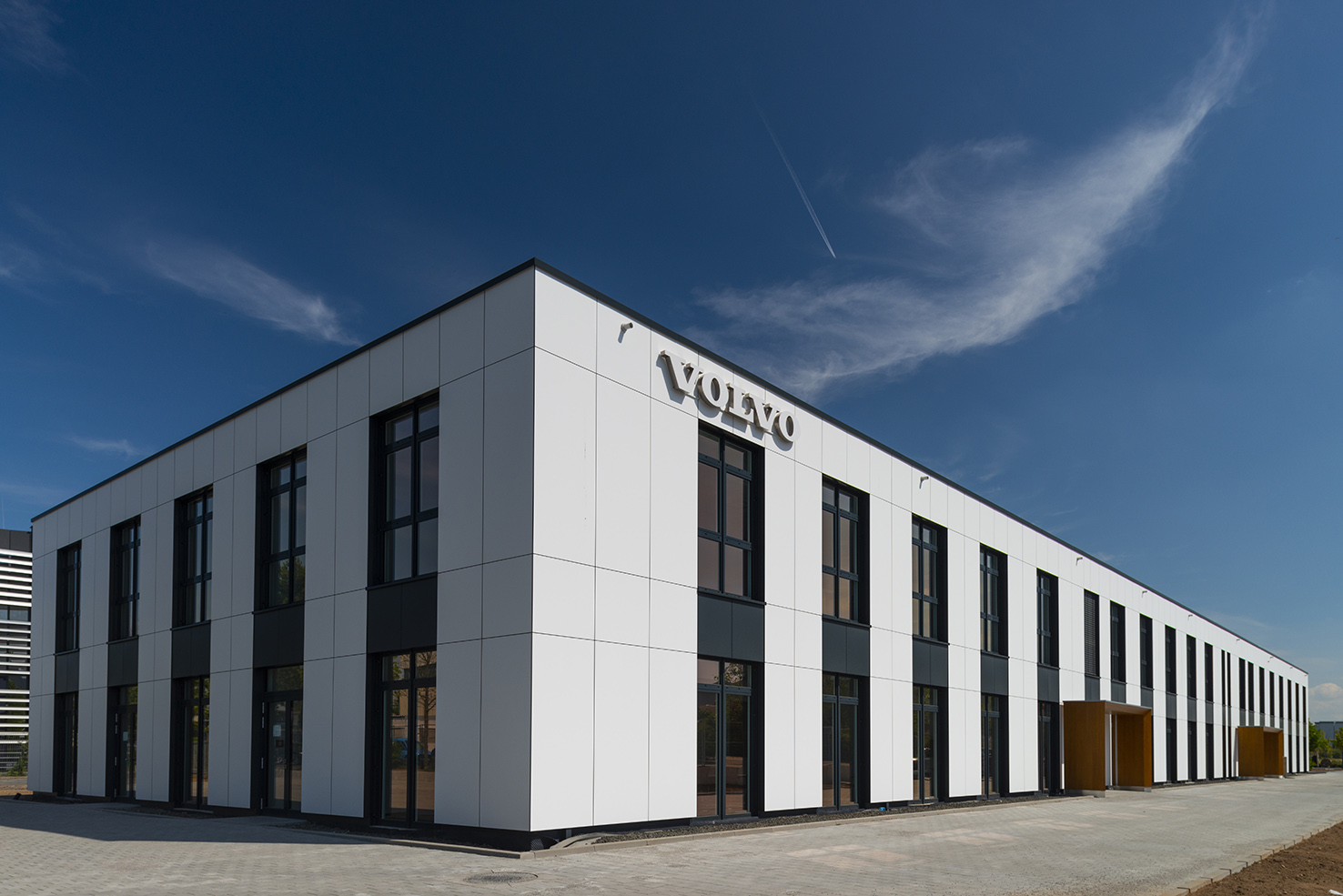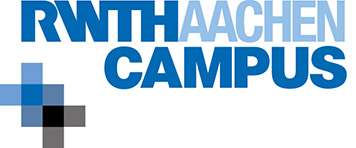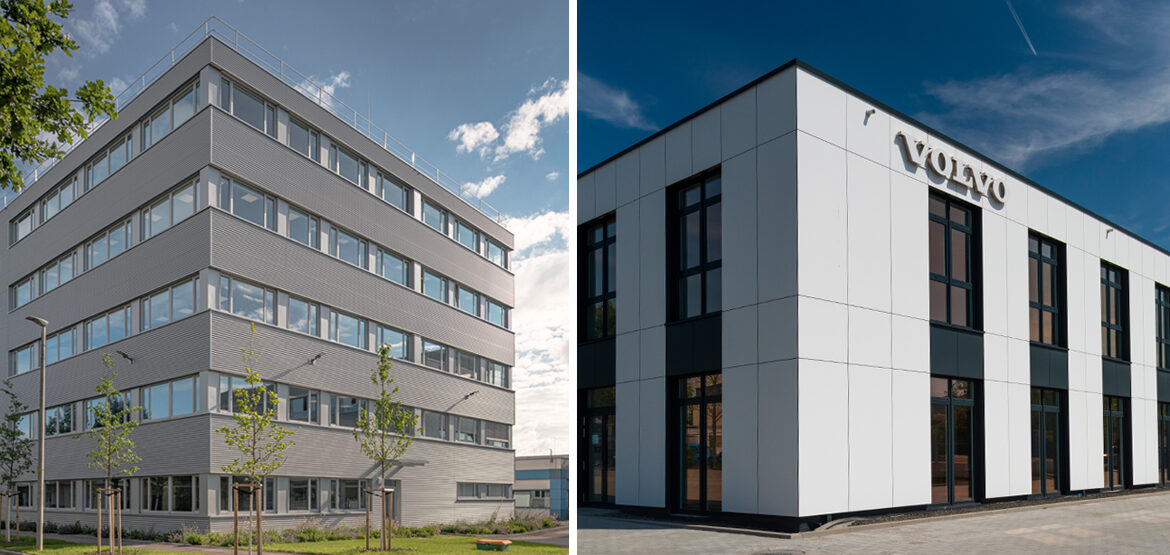13. January 2021
The Center Building and Infrastructure Engineering introduces the first practical guide for fire safety substantiation in modular construction in cooperation with the Ministry for Regional Identity, Communities and Local Government, Building and Gender Equality of the Land of North Rhine-Westphalia
The importance of modular construction is increasing continuously. In-creasing population numbers and demographic changes require the swift and high-standard creation of living spaces, as well as healthcare, edu-cation and assisted living facilities. “Modular construction has come along in leaps and bounds in recent years. The new practical guide eliminates uncertainties for principals, planners, manufacturers and government bodies in terms of fire safety”, explains Ina Scharrenbach, Minister of Regional Identity, Communities and Local Government, Building and Gender Equality of the Land of North Rhine-Westphalia.
Room cell experts from academia, industry and the federal government came together in the Center Building and Infrastructure Engineering to deal with current, relevant challenges regarding the successful imple-mentation of modular structures using room modules, containers and former sea freight containers. The consortium includes
- the Institute of Steel Construction at RWTH Aachen University with its Chair of Steel and Lightweight Metal Construction, and the teaching and research area of Sustainable Metal Building Envelopes,
- the room cell experts Algeco, ALHO, AMTRA, BOLLE, Cadolto, con-tainerwerk, ELA, SÄBU, KLEUSBERG, ProContain, Zeppelin Rental and
- the fire safety experts BFT Cognos.
The consortium was able to win the Ministry for Regional Identity, Com-munities and Local Government, Building and Gender Equality of the Land of North Rhine-Westphalia as a cooperation partner. The consorti-um saw their common challenge in the first step of clarifying legal issues in the use of room cells in view of fire safety aspects.
First consortial project: Substantiation of fire safety in modular construction
One major issue in modular construction projects for principals, planners, manufacturers and authorities is the question of what structural engineer-ing verifications – specifically with regards to fire safety – are required. As to date there has been no standard for all parties concerned regarding the properties, prerequisites and applicabilities of verifications, the result has been uncertainty and delays in project roadmaps, ultimately leading to higher costs. The consequence: The actual advantages of the room cell construction method over the conventional construction method, which in addition to ecological aspects lie in particular in a shorter project duration as well as in potentially lower project costs, do not come to bear. The industry and academic consortium of the Center Building and Infra-structure Engineering produced the first practical guide to fire safety re-quirements for modular construction elements based on steel supporting structures. This standardized aid for principals, planners, manufacturers and government bodies includes
- an introduction and definition of terminology and requirements,
- the categorization of three room cell types: Type I (sea freight con-tainers), Type II (steel frames free on the outside) and Type III (steel frames planked on the outside),
- a list and assessment of the types of usability substantiation and ap-plicability on national and European level, and
- a visualization of alternative substantiation approaches based of the building code in force in the federal state of North Rhine-Westphalia.
Jörg Löber, Managing Director at ALHO Systembau GmbH, Premium member of the Center Building and Infrastructure Engineering (CBI), on the consortial project: “As a leading modular construction firm, our name is synonymous for innovative and high-standard properties. We are proud to be able to add our competence and expertise to the develop-ment of the practical guide as a Premium member of this campus, in ef-fect ensuring more planning certainty for our construction method.” Jens Vetter, Managing Director at KLEUSBERG GmbH & Co KG, another Premium member of CBI, adds: “We here at KLEUSBERG specifically appreciate the constructive exchange with consumers, planners and certification bodies as a manufacturer of modular structures. The aim here is the unique differentiation between solutions available on the mar-ket and their specific features – in particular in terms of fire safety and relevant approvability secured under construction legislation.”
Additional modular construction solutions
The publication of the practical guide is only the first step to ensuring fire safety in modular construction. In phase 2, the consortial members will develop various construction features for room cell types in terms of their fire safety, and endeavor to define standards and speed up construction processes. Dr. Carl Richter, Managing Director of the Center Building and Infrastructure Engineering (CBI), issued the following statement about modular construction activities on RWTH Aachen Campus: “We are proud of the fact that we were able to build a very strong community with outstanding expertise in the area of modular construction in Aachen within the past year. We will feed our bundled expertise not only into the next project phase, but also into follow-up projects like the assessment of sustainability in modular buildings and Building Information Modeling.”

ALHO

KLEUSBERG

KLEUSBERG

ALHO Holding GmbH

Containerwerk/Stefan Hohloch

Campus GmbH

Campus GmbH
Press Contacts
Sonja Wiesner
Head of Media & Public Relations
Phone: +49 241 80-25794
E-mail: sonja.wiesner@rwth-aachen.de
Dr. Carl Richter
Managing Director
Phone: +49 241 80-23650
E-mail: richter@cbi.rwth-campus.com


